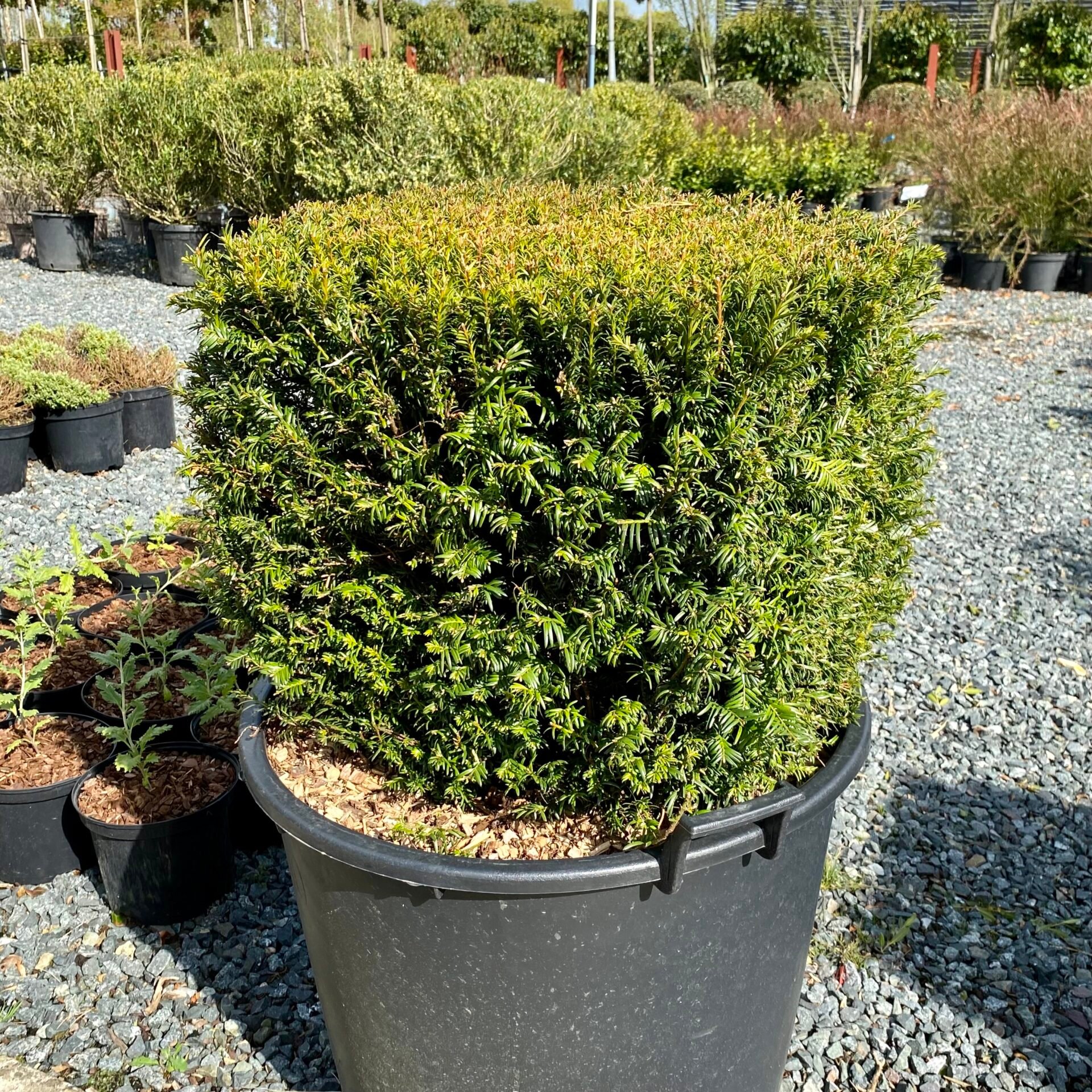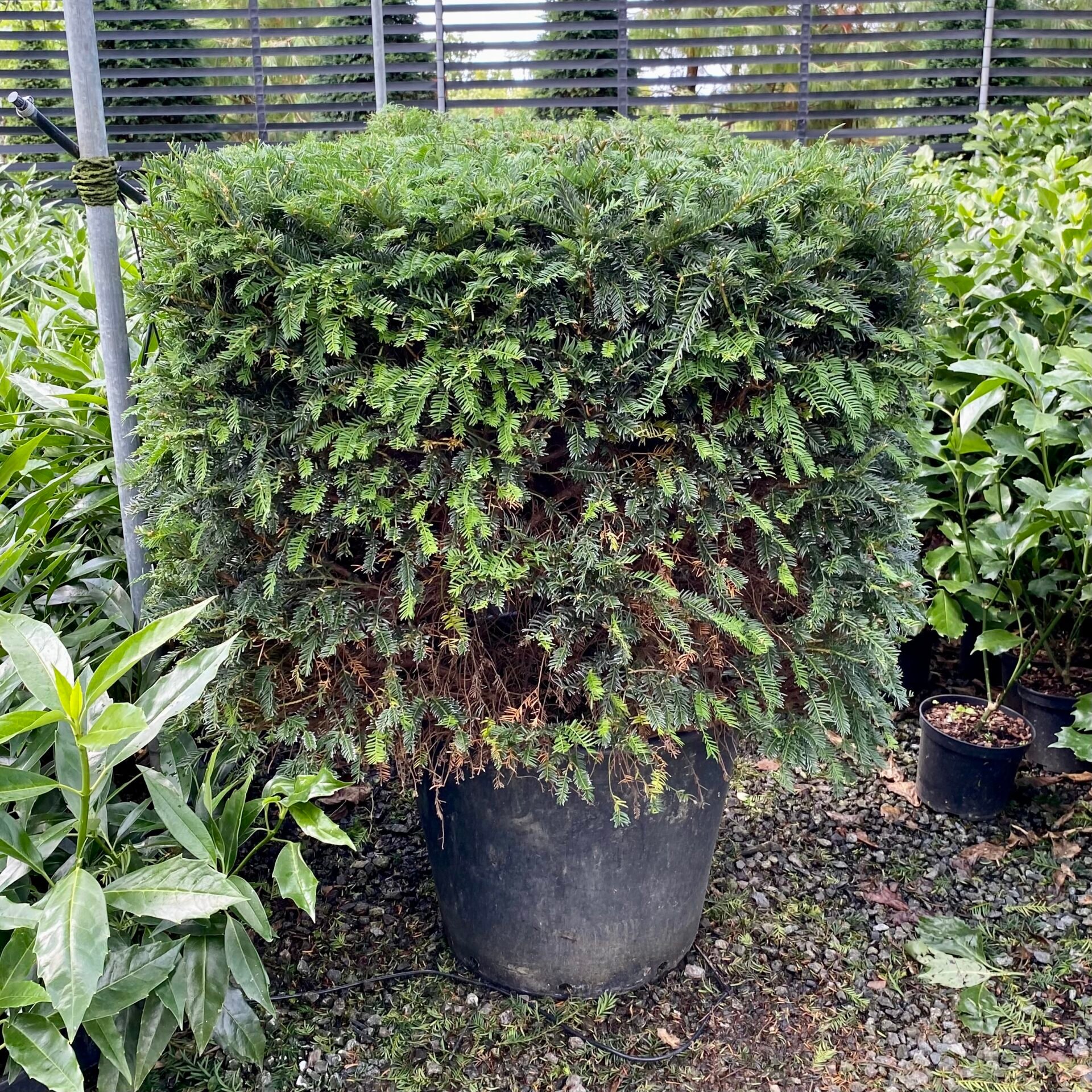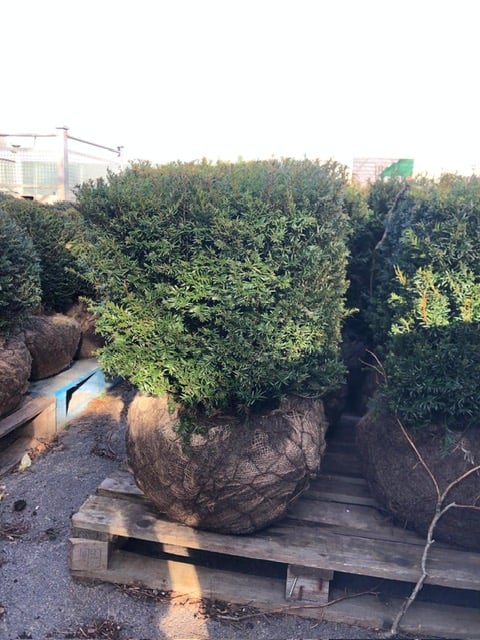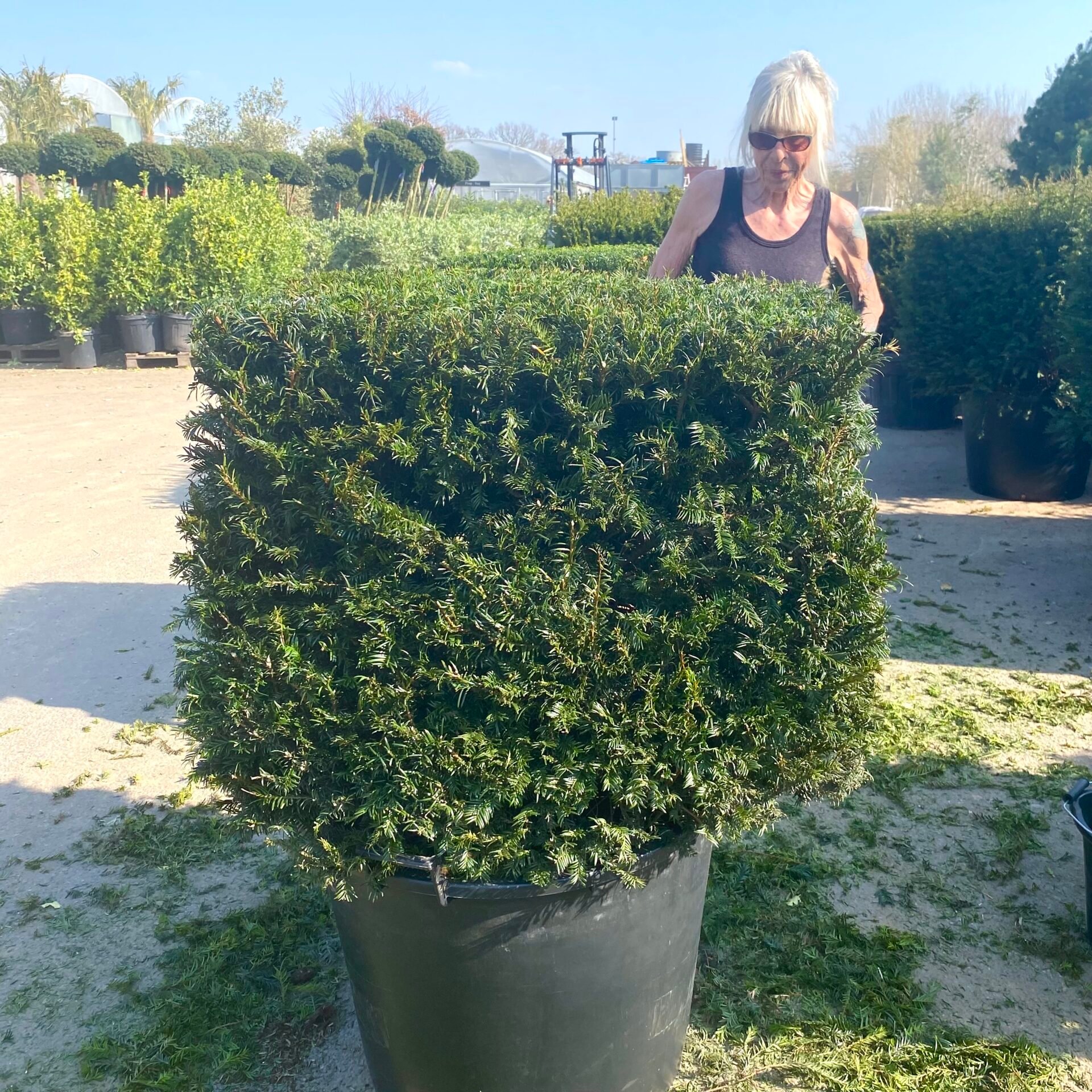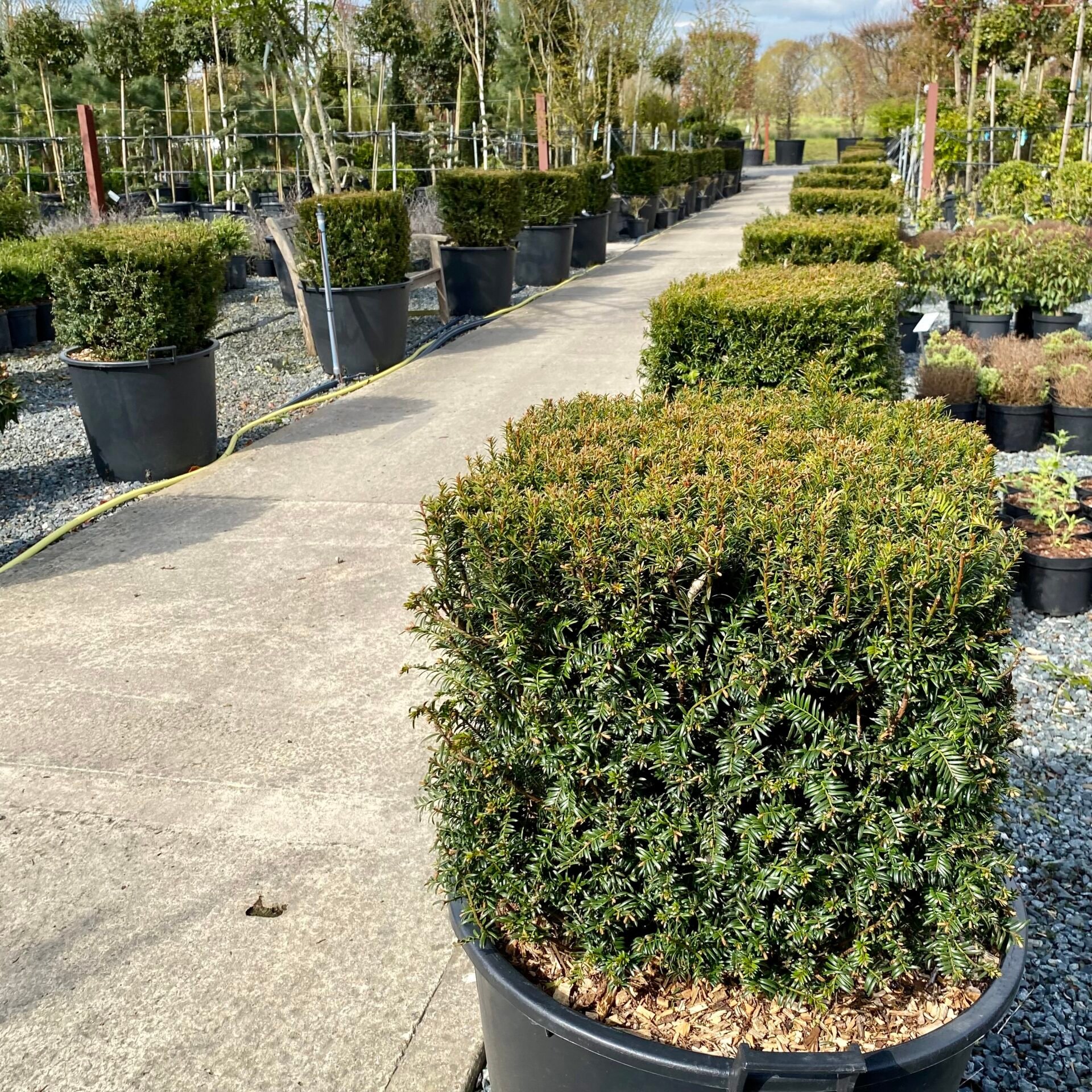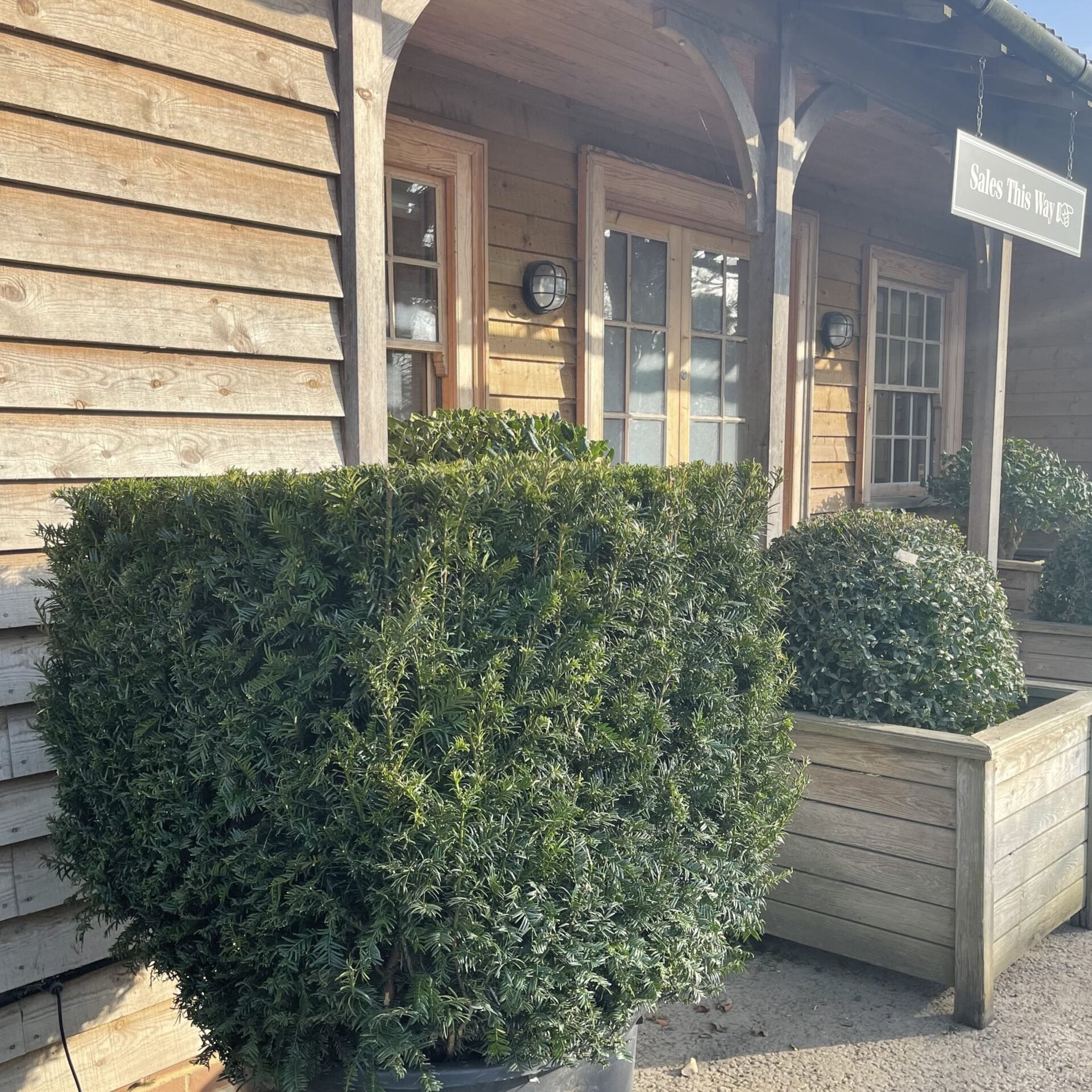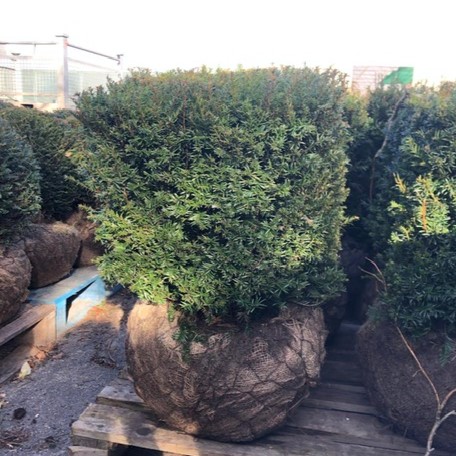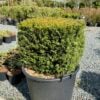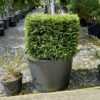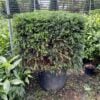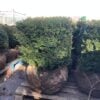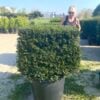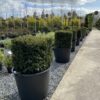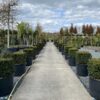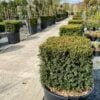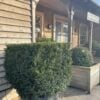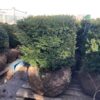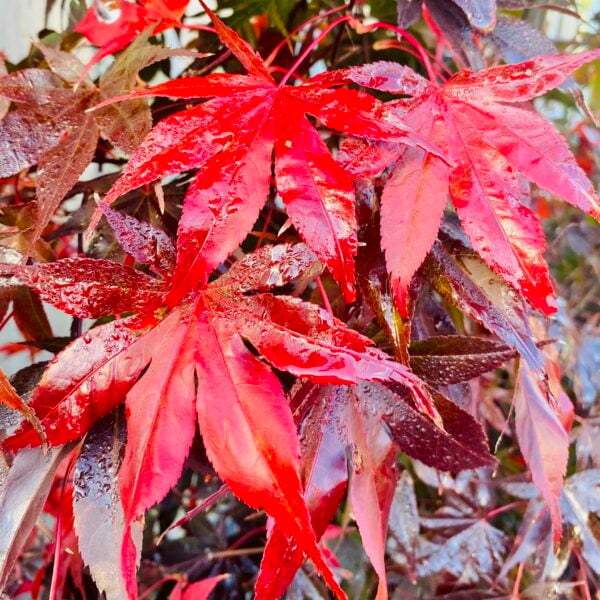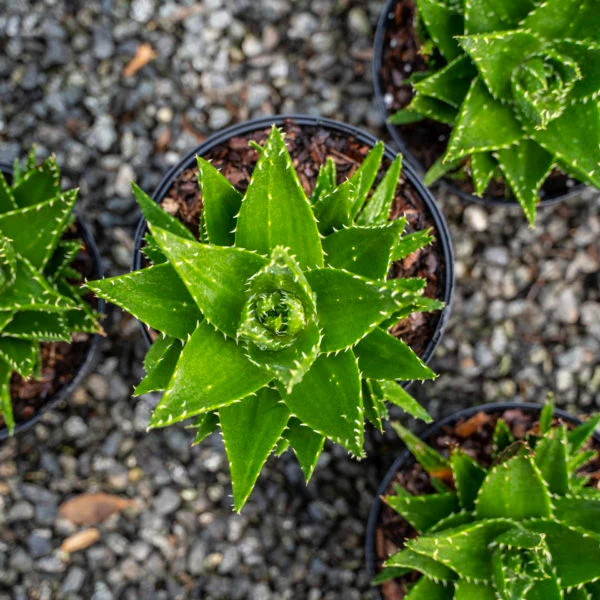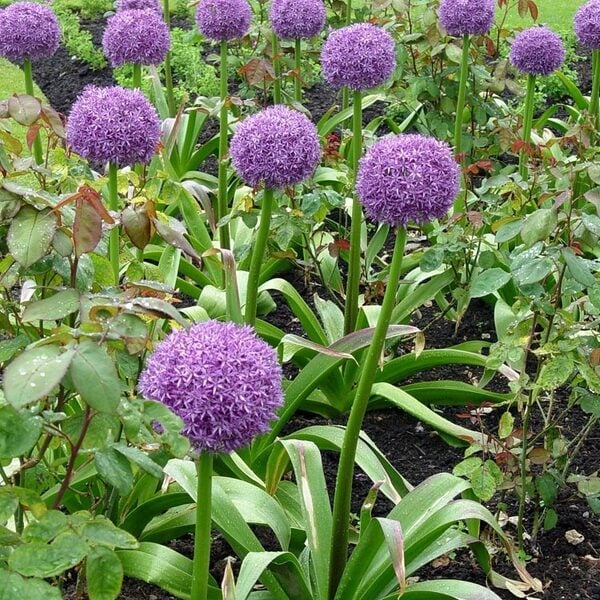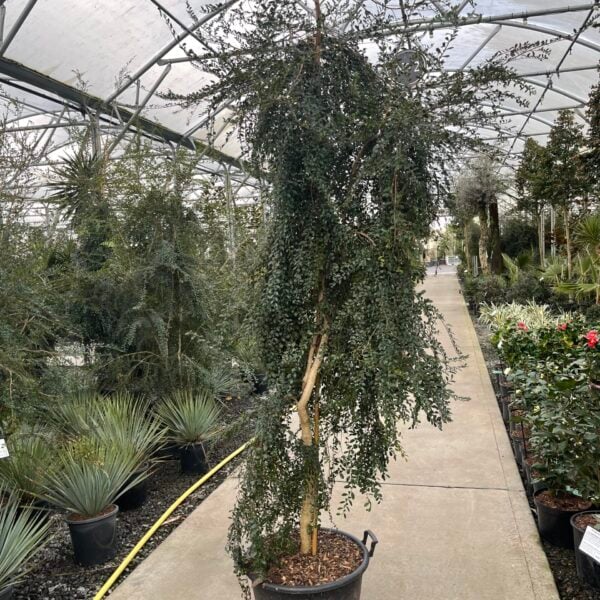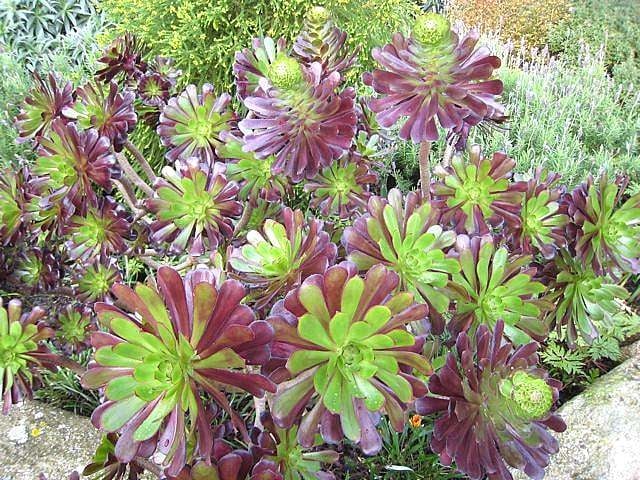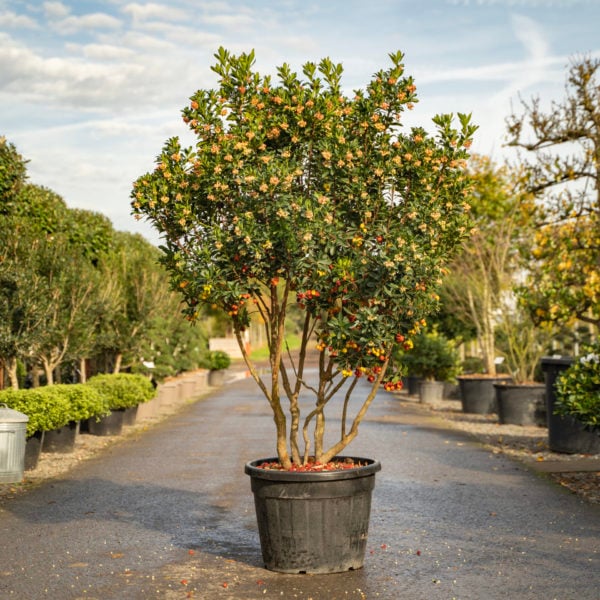Taxus baccata – Cubes (Yew)
From 255.00 incl. VAT
The perfect topiary yew cube is one of the most satisfying shapes fashioned from Taxus baccata. The epitome of simple yet smart precision. Whatever the time of the year, the light finds a way to define the symmetry of each refined luxurious evergreen side; highlighting the crisp lines and casting subtle geometric shadows on its near surrounds.

Hardiness level Green
Ideally, plant them in the ground as part of a more formal scheme to define the borders of a structured space. Also excellent for creating a contrast with looser-leafed forms and using as underplanting to punctuate a line of screening. Striking in generous sized pots or planters to frame garden entrances, line paths, walkways or position on patios and terraces. Slow growing. Clip twice a year. Will require a fair amount of light either in dappled shade or sunlight. Will need attentive care when first planted. Happy in clay, dry / well drained soil but not good on chalk (Ericaceous).
The Taxus baccata Family
A native European tree, more often seen clipped as a hedge and as topiary. The foliage is toxic to many browsing animals (cattle, horses and sheep) and so in rural areas, you'll only see this growing in church yards, gardens and some native stands of pure yew forest like the wonderfully ancient and slightly spooky Kingley Vale near Chichester in West Sussex. Because it's native, it's been used for centuries and is probably considered the poshest of all plants for topiary.
It needs pretty well drained soil (sandy or chalky is particularly good) but if on clay, it's a good idea to mound plant (plant high) and create a higher soil level with lots of mulch or any organic stuff you can get your hands on. It has a reputation for being slow growing (probably encouraged by the fact it's very long lived) but in ideal conditions (light sandy soil) it can grow much quicker.
As with all topiary, the more often you clip it, the quicker you'll get what you want, the denser it becomes and the better it looks. It's incredibly tough, can grow in sun or shade and - as with many coniferous plants - if exposed to cold winter winds and ultra-violet (from the sun), it becomes bronze rather than green. The green returns in the summer or you can clip in early March and reveal the nice green foliage lurking beneath. If the plant is in shade (protected from the ultra-violet), the foliage will remain green in the winter.
A word about yew hedges: It's well understood that generations of hedge clippers allow a hedge to get wider and wider. They think they're clipping the sides (this only applies to the sides, never the top) at the same width they did it the previous year but they're almost certainly not. We've seen paths in grand old gardens with yew hedges either side that once could take three people walking side by side quite comfortably. Eighty years later, one person can get down the path - sideways. It sounds ridiculous but it really does happen. With most hedges (Beech, Hornbeam, Privet, Laurel), you can just cut it back hard to where it should be and all will be well. Do the same with yew and you'll reveal lots of dead twigs which probably won't shoot. Stick your head inside an overgrown hedge and see the epicormic growth trying to grow on the main trunk - and there's your clue. Give that struggling epicormic growth some light and it'll go berserk. Yew will only regenerate from fairly meaty wood - not little twiggy bits. So the answer to an overgrown yew hedge is a bit radical; you've got to cut it right back to the trunk and let it start again. We've done remedial work on lots of hedges like that and everyone finds it more comfortable to do one side at a time. Radical - but it works.
Propagated by cuttings and from seed.
N.B. When clipping several plants with the same tool, have a bucket containing a 5% bleach solution and swish your blades around for 30 seconds between plants to sterilise them. This will help avoid the chance of cross contamination of disease.
As with all woody plants, plant high, exposing as much of the taper at the base of the trunk as possible. Allowing soil to accumulate round the base of a tree can be fatal. Keep very well watered when first planted.
Additional Information |
|
|---|---|
| Size | 110, 110L (H50-60cm, W45-55cm), 130-230L (H50-80cm, W80cm-1m) |
| Soil Type | |
| Light | |
| Plant Type | |
| Continent of Origin | |
| Specialist Plants | |
| Features | |
| Tree Size | |
| Situation | Exposed (To wind and sun), Mild City Gardens, Plants for Pots, Sheltered Garden |
| Hardiness | |
FAQs
How fast does Taxus baccata grow?
Taxus baccata, commonly known as Yew, has a reputation for being slow growing (probably encouraged by the fact it's very long lived) but in ideal conditions of light sandy soil it can grow much quicker. Its growth rate can vary depending on environmental conditions, soil and quality. Generally, Taxus baccata reaches a height of about 15ft (4.5M) after 25 years. However, it's important to note that growth rates can be influenced by various factors, and individual specimens may exhibit slightly different growth patterns.
How do you take care of Taxus baccata'?
Taxus baccata is generally low-maintenance. It needs pretty well drained soil (sandy or chalky is particularly good) but if on clay, it's a good idea to mound plant (plant high) and create a higher soil level with lots of mulch or any organic stuff you can get your hands on. However, you need to keep an eye on its growth and not let it go wild or too woody. The more often you clip it, the quicker you'll get what you want, the denser it becomes and the better it looks. The same principle applies to topiarised forms of Taxus baccata.
How tall does Taxus baccata grow?
Taxus baccata can reach a height of about 15ft within a span of 20 years. However, its growth rate can vary depending on environmental conditions and cultural practices.
Does Taxus baccata prefer sun or shade?
It's incredibly tough, can grow in sun or shade and - as with many coniferous plants - if exposed to cold winter winds and ultra-violet (from the sun), it becomes bronze rather than green. The green returns in the summer or you can clip in early March and reveal the nice green foliage lurking beneath. If the plant is in shade (protected from the ultra-violet), the foliage will remain green in the winter.
Is Taxus baccata an indoor or outdoor plant?
Taxus baccata is primarily an outdoor plant. We wouldn’t suggest you considered an indoor environment unless you had some very specific conditions. It is an evergreen plant that thrives in outdoor environments, particularly in gardens, landscapes, and other outdoor settings.
Is Taxus baccata suitable for hedging?
Yes, Taxus baccata is well-suited for hedging. It can be pruned and clipped successfully to form hedges. Its dense foliage and coniferous nature make it an excellent choice for creating privacy screens and formal hedges. But be careful not to leave your hedges to grow wild without trimming back. Yew will only regenerate from fairly meaty wood - not little twiggy bits. So, the answer to an overgrown yew hedge is a bit radical; you've got to cut it right back to the trunk and let it start again.
Can Taxus baccata be grown in pots or containers?
Yes, Taxus baccata can be grown in pots or containers. However, it's important to select a container that provides enough space for the plant's root system to grow and to ensure proper drainage. Regular pruning and shaping may be necessary to maintain its size and form in a container.
Is Taxus baccata toxic to pets?
The foliage is toxic to many browsing animals (cattle, horses and sheep) and so in rural areas, you'll only see this growing in church yards, gardens and some native stands of pure yew forest.





